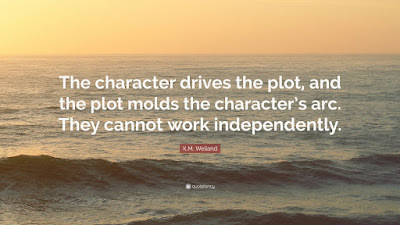The Shadows that Speak to Us

Last time, I highlighted the writing class sponsored by LorinOberweger and Free Expressions, The Breakout Novel Intensive, exploring theprinciples outlined in Donald Maass ‘ book, Writing the Breakout Novel(2001). As a story nerd, I thrive on taking deep dives into the storyengineering process, and this is as deep as it can get. This time I wantto sing the praises of K.M. Weiland’s course, Shadow Archetype Course. This course six powerful archetypal character arcs and the passive/aggressiveshadow archetypes that must be overcome to reach positive transformation.
As Weiland offers in the first class:
“Good art both mimics and influences life. This is nevermore true than of storytelling and its direct mimicry of life’s narrative. Asaudiences, we seek stories not as escapism but more pertinently as wisdom—as amirror for our own experiences, a possible context through which we mayrecognize ourselves and make sense of our own existence. If you haveexperienced a book or a movie (or even a song) that has changed yourperspective about yourself or the world, then you know the power of story. Buteven simply as entertainment, stories only engage audiences when they are ableto tap the most important and primal patterns of life.
These patterns are archetypes.”
Having studied Joseph Campbell’s iconic hero’s journey, and ChrisopherVogler’s The Writer’s Journey: Mythic Structure for Structure – which, by theway, is also offered as a class through Free Expressions – I delighted in this deepstudy into character archetypes. AsWeiland explains, archetypes are universally recognized symbols arising from acollective context. They span the globe, reach through history, and dig deepinto our individual psychological experiences.
In short, archetypes are powerful.
Her course builds upon the concepts she explores in herbook Writing Archetypal Character Arcs: The Hero's Journey andBeyond. Called Life Arcs, the study is centered upon sixtransformational archetypes that “signify the main initiations of the humanlife cycle. A character arc is thechange initiated in the protagonist) by the external events of the story. Thecharacter starts in one place (mentally, physically, emotionally, and/orphysically) at the beginning of the story and arcs into a different place bythe end. This is the Life Arc.
For example, I paid particular attention to the archetype,The Maiden - Coming of Age. As Weiland explains, “The first of the two youthfularcs, the Maiden is associated with puberty, sexual awakening, andindividuating into one’s own personal authority. She arcs from Innocent toIndividual. The Maiden’s journey begins with the Lie (the limited mindset withwhich the character begins the story ) and transforms into her Truth (representing the more expanded perspectiveinto which the character will be arcing. This Truth won’t necessarily representultimate truth, but simply a more effective alternative to the Lie.) Forexample, Submission(Lie) vs. Sovereignty(Truth). “Submission to authority figures is necessary for survival.” versus“Personal sovereignty is necessary for growth and survival.”
By the way, be sure to check out YA author Holly Schindler’s exploration intoplotting through backstory series on her newsletter, It's My Story & I'm Stickin' With It. It’s an excellent companion to Weiland’scourse, focusing on plotting strategies. This includes:
Plotting Through Backstory (Review So Far - Post #5)
The Four-Act Structure (Plotting Through Backstory #6)
The Inciting Event (Change is Afoot - Plotting Through Backstory #8)
As Weiland reinforces throughout her course, and her books, powerful character arcs create powerful stories!
Thank you for being a part of my journey!
-- Bobbi Miller



